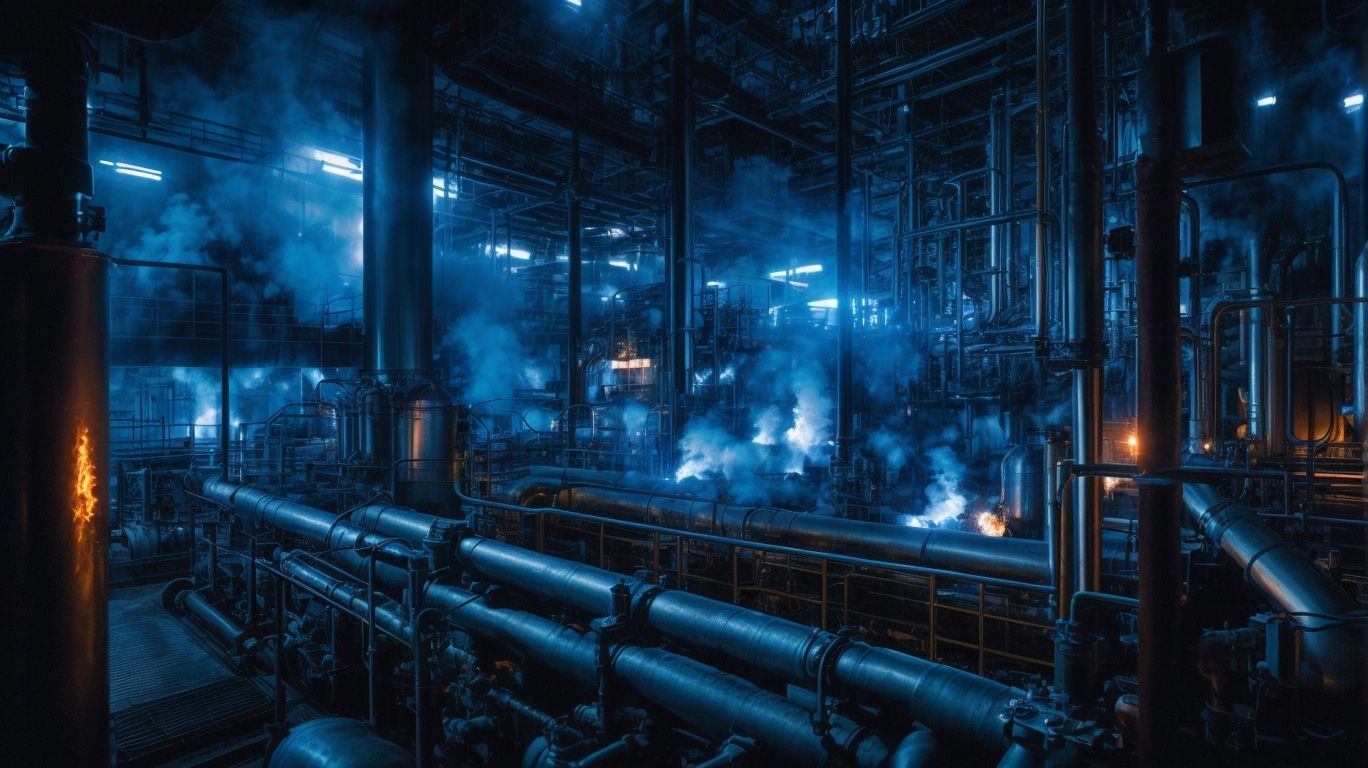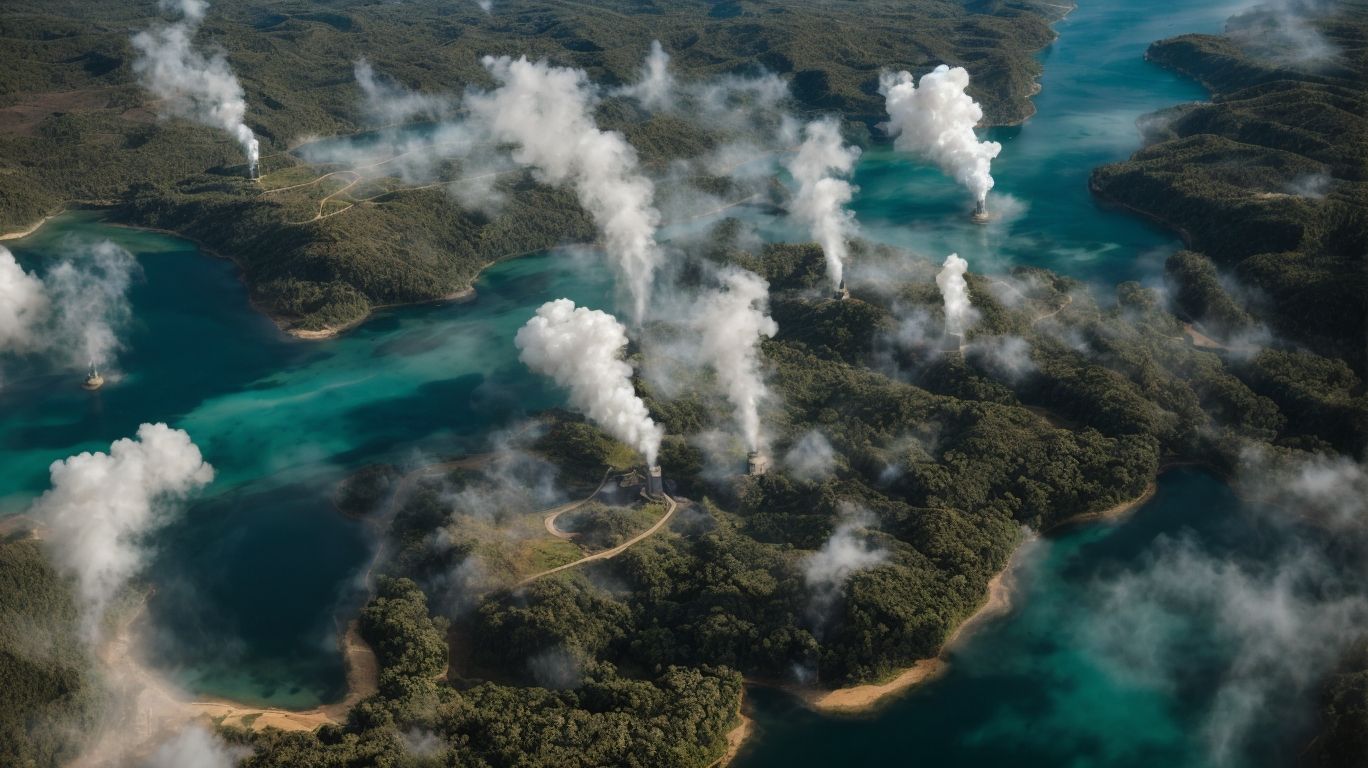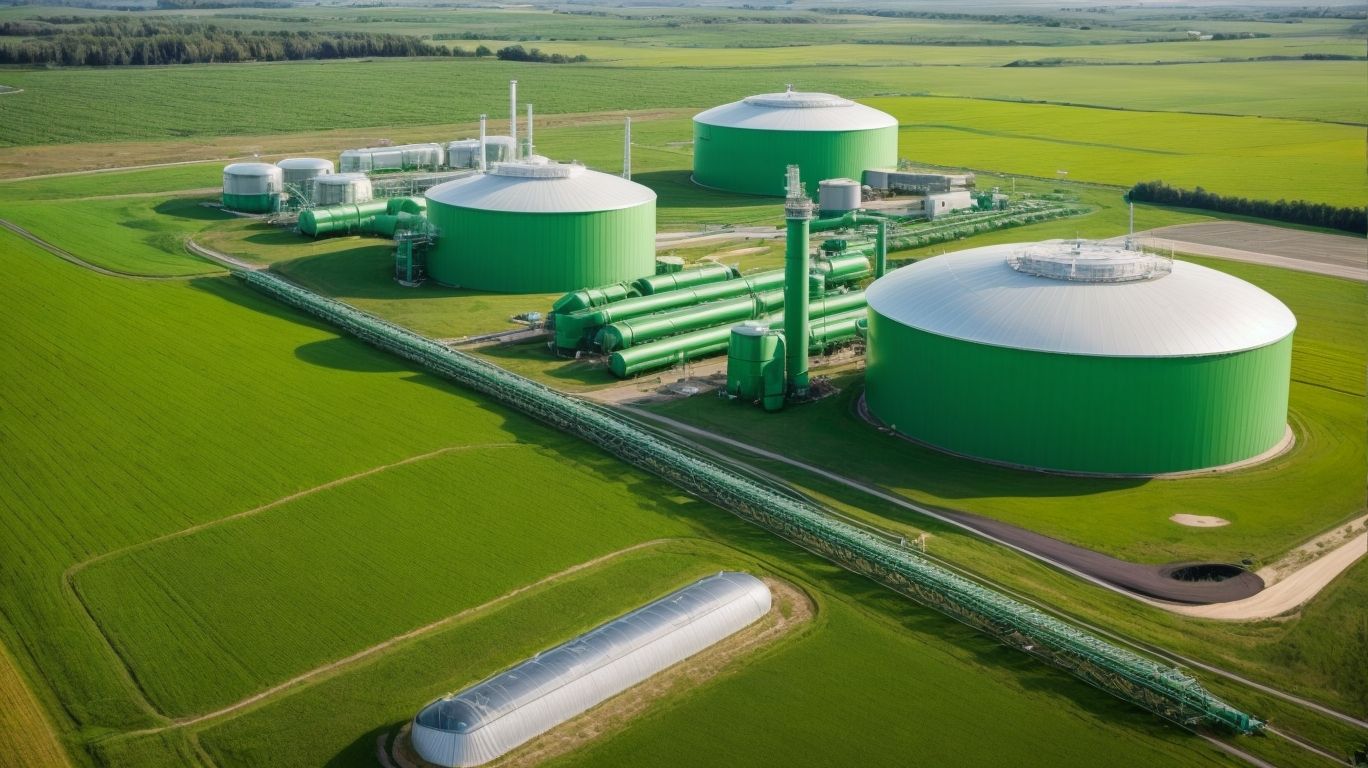Methane, a colorless and odorless gas, is a potent greenhouse gas that contributes to global warming and climate change. It is a concern for environmentalists and scientists due to its increasing levels in the atmosphere. In this article, we will explore the production of methane, its impact on the atmosphere, and possible solutions to reduce its emissions.
Methane is produced through both natural and human activities. Natural sources include wetlands, oceans, and animals, while human activities such as agriculture, fossil fuel production, and waste management also contribute to its production. According to research by the Intergovernmental Panel on Climate Change (IPCC), global methane emissions have increased by 150% since the Industrial Revolution.
The effects of methane on the atmosphere are concerning due to its heat-trapping capabilities. It absorbs 28 times more heat than carbon dioxide over a 100-year period, making it a significant contributor to global warming. Methane also has short-term effects, such as contributing to smog formation and decreasing air quality, and long-term effects, including melting of permafrost and destabilizing marine methane hydrate deposits.
To address the rising levels of methane in the atmosphere, technological solutions such as methane capture and utilization in various industries have been proposed. Additionally, behavioral changes, such as reducing food waste and decreasing meat consumption, can also help reduce methane emissions. Currently, global efforts are being made to reduce methane emissions through the United Nations Environment Program’s (UNEP) Global Methane Initiative and the Paris Agreement.
The future outlook for methane levels in the atmosphere is dependent on the effectiveness of these initiatives. It is crucial to continue monitoring and reducing methane emissions to mitigate its impact on climate change. As methane levels continue to rise, it is essential for individuals and industries to take action to reduce their contribution to this greenhouse gas.
Key Takeaways:
What is Methane?

Photo Credits: Chemicalglossary.Net by Juan Miller
Methane is a powerful greenhouse gas that plays a significant role in the Earth’s changing climate. It is a type of hydrocarbon compound made up of one carbon atom and four hydrogen atoms. Methane is naturally produced by various sources, including wetlands, livestock, and natural gas production. Additionally, human activities such as fossil fuel extraction and transportation also release methane into the atmosphere. Due to its higher global warming potential compared to carbon dioxide, it is crucial to address and reduce methane emissions. Understanding the sources, processes, and impacts of methane is vital in developing effective strategies to mitigate its negative effects on the environment and climate change.
How is Methane Produced?

Photo Credits: Chemicalglossary.Net by Donald Jackson
Methane is produced through various natural and human activities. Here is a list of steps explaining how methane is produced:
- Enteric Fermentation: Methane is produced in the digestive systems of ruminant animals, such as cows and sheep.
- Wetland Emissions: Methane is generated through the decomposition of organic matter in wetlands and marshes.
- Landfills: When organic waste decomposes in landfills, methane is released as a byproduct.
- Fossil Fuel Extraction: Methane is released during the extraction, transportation, and storage of fossil fuels like coal, oil, and natural gas.
- Rice Cultivation: The flooded rice fields create an environment for bacteria to produce methane in the absence of oxygen.
Understanding these sources is crucial in developing strategies to mitigate methane emissions and combat climate change. For more information on the rising concern of methane in the atmosphere and its impact on climate change, please visit this reputable source.
What are the Natural Sources of Methane?
Natural sources of methane include:
- Wetlands, which are the largest natural source, responsible for producing approximately 20-30% of global methane emissions. Methane is released during the decomposition of organic matter in waterlogged conditions.
- Oceans, which also emit methane through biological processes and the breakdown of organic material.
- Termites, which produce methane through their digestive process.
- Additionally, methane can escape from underground natural gas reservoirs and seep into the atmosphere.
These natural sources have a significant impact on the overall levels of methane in the atmosphere.
What are the Human Activities that Contribute to Methane Production?
Human activities play a significant role in the production of methane through various processes. These activities include agricultural practices such as rice cultivation and livestock farming, where the anaerobic conditions in rice fields and digestive systems of ruminant animals result in the release of methane. Additionally, the extraction, production, and distribution of fossil fuels like coal, oil, and natural gas also contribute to methane emissions into the atmosphere. Landfills also play a role in methane production as organic waste decomposes in an anaerobic environment.
It is crucial to address and mitigate these human activities to reduce methane emissions and combat the effects of climate change.
What are the Effects of Methane on the Atmosphere?

Photo Credits: Chemicalglossary.Net by Stephen Garcia
Methane is a potent greenhouse gas that has significant and wide-ranging effects on the atmosphere, contributing to climate change.
- Global warming: Methane has a greater heat-absorbing capacity than carbon dioxide, intensifying the greenhouse effect.
- Ice melt: Higher levels of methane can accelerate the melting of polar ice, leading to an increase in sea levels.
- Air pollution: When combined with other pollutants, methane can form ozone, a harmful air pollutant.
- Ecological impacts: The emission of methane can disrupt ecosystems, affecting both wildlife and vegetation.
Pro-tip: Taking steps to reduce methane emissions from sources like agriculture and fossil fuel production can help mitigate the effects of climate change.
How does Methane Contribute to Climate Change?
Methane plays a significant role in climate change due to its potent greenhouse effect. Here are the steps that explain how methane contributes to climate change:
- Methane is naturally released into the atmosphere through sources such as wetlands, oceans, and wildfires.
- Human activities, including agriculture, livestock farming, and fossil fuel extraction, also contribute to methane emissions.
- Once in the atmosphere, methane absorbs and traps heat, adding to the greenhouse effect.
- In the short term, methane is more effective at trapping heat than carbon dioxide.
- Increased levels of methane can result in higher temperatures, ice melting, and rising sea levels.
The growing concern about methane’s impact on climate change has spurred global efforts to reduce emissions and find sustainable solutions. These efforts include implementing stricter regulations, investing in clean energy technologies, and promoting sustainable agricultural practices. However, continued collaboration and action are crucial in mitigating the effects of methane on our climate.
What are the Short-Term and Long-Term Effects of Methane on the Atmosphere?
Short-Term and Long-Term Effects of Methane on the Atmosphere
| Short-Term Effects | Long-Term Effects |
|---|---|
| Contributes to global warming | Amplifies climate change |
| Traps heat in the atmosphere | Increases average global temperature |
| Increases the greenhouse effect | Accelerates ice melt and sea-level rise |
| Reduces air quality | Alters weather patterns |
| Causes respiratory problems | Disrupts ecosystems and biodiversity |
| Forms ground-level ozone | Impacts agricultural productivity |
True story: In 2015, a massive methane leak occurred in Porter Ranch, California. The leak, caused by a malfunctioning natural gas well, released an estimated 97,100 metric tons of methane into the atmosphere. The resulting short-term effects were devastating, including health issues and forced evacuations for residents. However, the long-term effects were even more concerning, as the leak contributed to the exacerbation of climate change and had a lasting impact on the local environment. This incident served as a reminder of the urgent need for stricter regulations and improved monitoring to prevent such methane leaks in the future.
What are the Solutions to Reduce Methane Emissions?

Photo Credits: Chemicalglossary.Net by Christopher Roberts
Reducing methane emissions is essential in the fight against climate change. Fortunately, there are several effective solutions that can help tackle this issue:
- Methane capture and utilization: One solution is to capture methane from landfills, agriculture, and energy production and use it as an energy source. This can significantly reduce emissions.
- Improved agricultural practices: Implementing techniques such as precision fertilization, anaerobic digestion, and manure management can minimize methane emissions from livestock and rice cultivation.
- Leak detection and repair: Regular monitoring and prompt repair of leaks in natural gas infrastructure can prevent methane from escaping into the atmosphere.
- Transition to renewable energy: Shifting from fossil fuels to renewable energy sources like wind, solar, and hydroelectric power can reduce methane emissions associated with energy production.
- Sustainable waste management: Strategies like composting, recycling, and waste-to-energy conversion can help decrease methane emissions from landfills and wastewater treatment plants.
By implementing these solutions, we can make significant progress in reducing methane emissions and mitigating the impacts of climate change.
What are the Technological Solutions to Reduce Methane Emissions?
To decrease methane emissions, various technological solutions can be utilized:
- Methane capture and utilization: By capturing methane from landfills, wastewater treatment plants, and agricultural operations, its release into the atmosphere can be prevented. This captured methane can then be used as an alternative energy source.
- Improved leak detection and repair: Advanced technologies, such as infrared cameras and sensors, can quickly detect and locate methane leaks in pipelines, storage facilities, and industrial processes, allowing for immediate repairs.
- Methane oxidation catalysts: These catalysts can be installed in engines and industrial equipment to improve the combustion of methane, thereby reducing emissions.
- Biogas upgrading: Converting biogas from organic waste into biomethane, which has a higher methane content, can replace the use of fossil fuels in transportation and heating systems.
- Carbon capture and storage: Technologies that capture methane emissions from industrial processes and store them underground can prevent their release into the atmosphere.
Implementing these technological solutions can significantly decrease methane emissions and contribute to mitigating the effects of climate change.
What are the Behavioral Changes that can Help Reduce Methane Emissions?
To decrease methane emissions, individuals can make changes in their daily behaviors. Some effective measures include:
- Reducing meat consumption: Livestock farming is a major source of methane emissions. By choosing plant-based meals or reducing meat consumption, individuals can contribute to lower methane levels.
- Proper waste management: Methane is released from landfills when organic waste decomposes. Individuals can reduce methane emissions by recycling, composting, and minimizing food waste.
- Efficient energy use: Conserving energy and using appliances and vehicles more efficiently can help decrease methane emissions from fossil fuel extraction and combustion.
- Supporting renewable energy: Transitioning to renewable energy sources like solar and wind power reduces dependence on fossil fuels and their associated methane emissions.
- Encouraging policy changes: Individuals can support and advocate for policies that promote methane reduction, such as regulations on methane leakage in the oil and gas industry.
In an interesting historical note, it is worth mentioning that waste management practices in the 19th century were vastly different from those of today. Before the development of modern sanitation systems, waste was often dumped on streets or in rivers, resulting in significant methane emissions from decomposing organic matter. It was only through advancements in waste management and public health efforts that behavioral changes were made to improve sanitation and decrease methane emissions.
What are the Current Global Efforts to Address Methane Emissions?

Photo Credits: Chemicalglossary.Net by Joshua Hernandez
The urgency to address methane emissions globally is increasing as the impact of this potent greenhouse gas on climate change becomes more apparent. Several actions are being taken to reduce methane emissions, including:
- Setting ambitious targets
- Improving detection and monitoring technologies
- Implementing innovative solutions for capturing and utilizing methane
- Collaborating internationally
For instance, countries like the United States and the European Union have set goals to reduce methane emissions by up to 45% by 2030. Technologies and satellite-based monitoring systems are being utilized to detect and quantify methane leaks from various sources, such as oil and gas operations. Additionally, solutions are being developed to capture methane emissions from landfills, livestock, and wastewater treatment plants, and convert them into usable energy or other valuable products. International collaborations through initiatives like the Global Methane Alliance and the Climate and Clean Air Coalition are also promoting the sharing of expertise and best practices in methane reduction. Notably, methane is over 25 times more potent than carbon dioxide in terms of its warming potential over a 100-year period.
What is the Future Outlook for Methane Levels in the Atmosphere?

Photo Credits: Chemicalglossary.Net by James Jackson
The future outlook for methane levels in the atmosphere is a matter of concern. Methane, a potent greenhouse gas that contributes to climate change, has been increasing in recent years according to scientific studies. Factors such as expanding agricultural practices, fossil fuel extraction, and thawing permafrost are expected to contribute to further methane emissions, which could have severe consequences for our climate. These consequences include more frequent and intense heatwaves, rising sea levels, and disruptions to ecosystems. It is crucial that we take immediate and effective action to reduce methane emissions and mitigate the impacts of climate change.
In 2020, a news report highlighted the alarming increase in methane emissions from a leaking gas well in the Arctic. This incident resulted in a large methane plume being released into the atmosphere, adding to the global methane levels. The story served as a wake-up call for the urgent need to address methane emissions and prevent similar incidents in the future. It underscored the importance of monitoring and regulating methane sources to protect our planet and mitigate the effects of climate change.
Frequently Asked Questions
What is methane and why is it a concern for climate change?
The United Nations Environment Programme is working with the Climate and Clean Air Coalition to reduce farming-related methane emissions, which are the main source of methane emissions. They are also advocating for rethinking agricultural practices, leveraging technology, and shifting towards plant-rich diets to reduce methane emissions and limit global warming to 1.5°C. Farmers can play a crucial role in reducing methane emissions by providing animals with more nutritious feed, experimenting with alternative types of feed, and managing manure more efficiently. For staple crops like paddy rice, experts recommend alternate wetting and drying approaches that could halve emissions without impacting yield. The rising methane levels in the atmosphere are contributing to the overall rise in planet-warming greenhouse gases. Methane is a particularly concerning gas because it traps much more heat than carbon dioxide. Its increase since 2020 has been significant and shows no signs of slowing down, leading to destructive impacts on the environment. NOAA scientists and policymakers are urgently calling for action to lower human-caused emissions and build towards a climate-ready nation. The National Oceanic and Atmospheric Administration has released reports and data on methane levels and is working to understand the exact amounts of methane from human activity versus natural environments through research and record-keeping. If methane emissions continue to rise, it could have severe consequences for the environment and human health. Methane is a hazardous air pollutant and can contribute to ground-level ozone, which can lead to premature deaths. It is also a powerful greenhouse gas, and its continuous increase could push global warming limits beyond the goals set by the Paris climate change agreement. What is the role of farmers in reducing methane emissions?
How is rising methane levels impacting the environment?
What is being done to address the issue of rising methane levels?
What are the potential consequences if methane emissions continue to rise?
